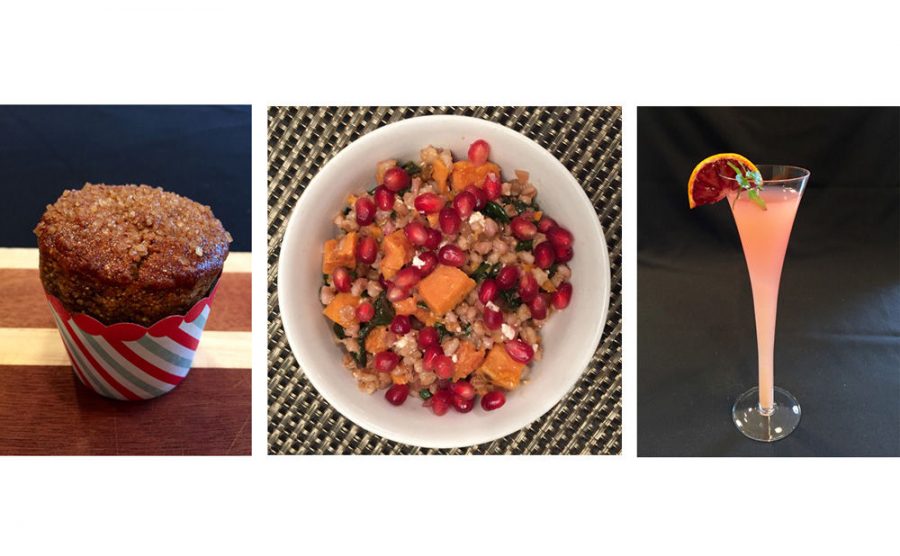Exploring barley for Tu B’Shevat
Published January 28, 2015
Deuteronomy 8:8 refers to Israel as “a land of wheat and barley, of vines, figs and pomegranates, a land of olive trees and [date] honey.” And on Tu B’Shevat, which is the New Year of Trees, it is customary to partake in the “seven species” mentioned in that Torah passage. While some of us have a formal seder in which everyone samples each of the “species” individually, many of us prefer to find ways to incorporate those grains, fruits and vegetables into our holiday meal.
For me, Tu B’Shevat is also an opportunity to explore a “species” and share with my readers some new and exciting ways to prepare it. This year, I’ve decided to focus on barley.
There is nothing quite as ambrosial as the aroma of fresh bread baking, except perhaps, the smell of fermented barley wafting out of the smokestacks at the Anheuser-Busch brewery down on Pestalozzi Street in the Benton Park neighborhood.
While wheat has become the primary ingredient in modern baking, barley occupied that key role for thousands of years, dating back to the 9th millennium B.C.E., when our ancestors began cultivating it. Barley was once a popular cereal grain grown throughout Asia and the Middle East and was the mainstay of diets the world over. Today, wheat has supplanted barley’s significance in our diets, with the result that most of the barley harvested becomes animal feed.
What is good enough for animals, however, is definitely good enough for us. Barley is packed with nutrients – high in fiber, protein, niacin and folate – and is a good source of vitamins and minerals. A diet rich in barley has been found to lower cholesterol and, because of its low glycemic level (the impact it has on raising our blood sugar levels), also controls blood sugar. Barley is low in calories and, because we digest it slower than many other foods, it is a good choice for people watching their weight.
Barley is a low-gluten grain, meaning that breads made exclusively from barley will be unusually dense. Gluten is a protein that gives bread its elasticity, and thus breads made exclusively from barley won’t sufficiently rise. However, adding smaller amounts of barley to recipes with other higher gluten grains (such as bread flour, all-purpose flour and finer-ground cake flours) can boost the flavors and nutrition of breads, cakes and pastries. Furthermore, barley, with its addictive nutty flavor and healthy nutrition profile, make it the perfect main ingredient in soups, stews and salads.
Three primary types of barley are used for baking and cooking: hulled, which has been minimally processed to remove the inedible outer hull, retaining most of the whole grain; pearled, which is hulled barley that has been polished to remove the hull along with much of the of the outer whole grain bran; and flaked, which is hulled barley that has been steamed, rolled and dried so that it cooks faster.
Barley flour can be simply made by grinding hulled barley in a high-speed blender. It can also be found, along with other nutritious flours, in the baking aisles of many supermarkets and health food stores.
And just when I thought barley was only for eating (other than as an ingredient in a satisfying mug of beer), I discovered barley water. Popular in India, this drink can be flavored with various herbs and fresh citrus. Besides being a great thirst quencher, barley water helps maintain kidney and bladder health and, believe it or not, keeps your skin and hair looking youthful. Better yet, by simply increasing the amount of water you use to cook your barley in, you will end up with both cooked barley and a batch of barley water. In other words, it’s a twofer: both a delicious and nutritious drink and a salad, all from a single pot!
I hope I have piqued your interest and appetites for cooking with barley. While a soup made from barley and mushrooms may be more familiar, I am including recipes for a salad (which incorporates one of our most underused grains, along with three other of the seven species: olive oil, pomegranates and dates), for barley lemonade and for deliciously moist muffins.
Margi Lenga Kahn is the mother of five and grandmother of five. A cooking instructor at the Kitchen Conservatory, she is working on a project to preserve the stories and recipes of heritage cooks. She welcomes your comments and suggestions at [email protected].















